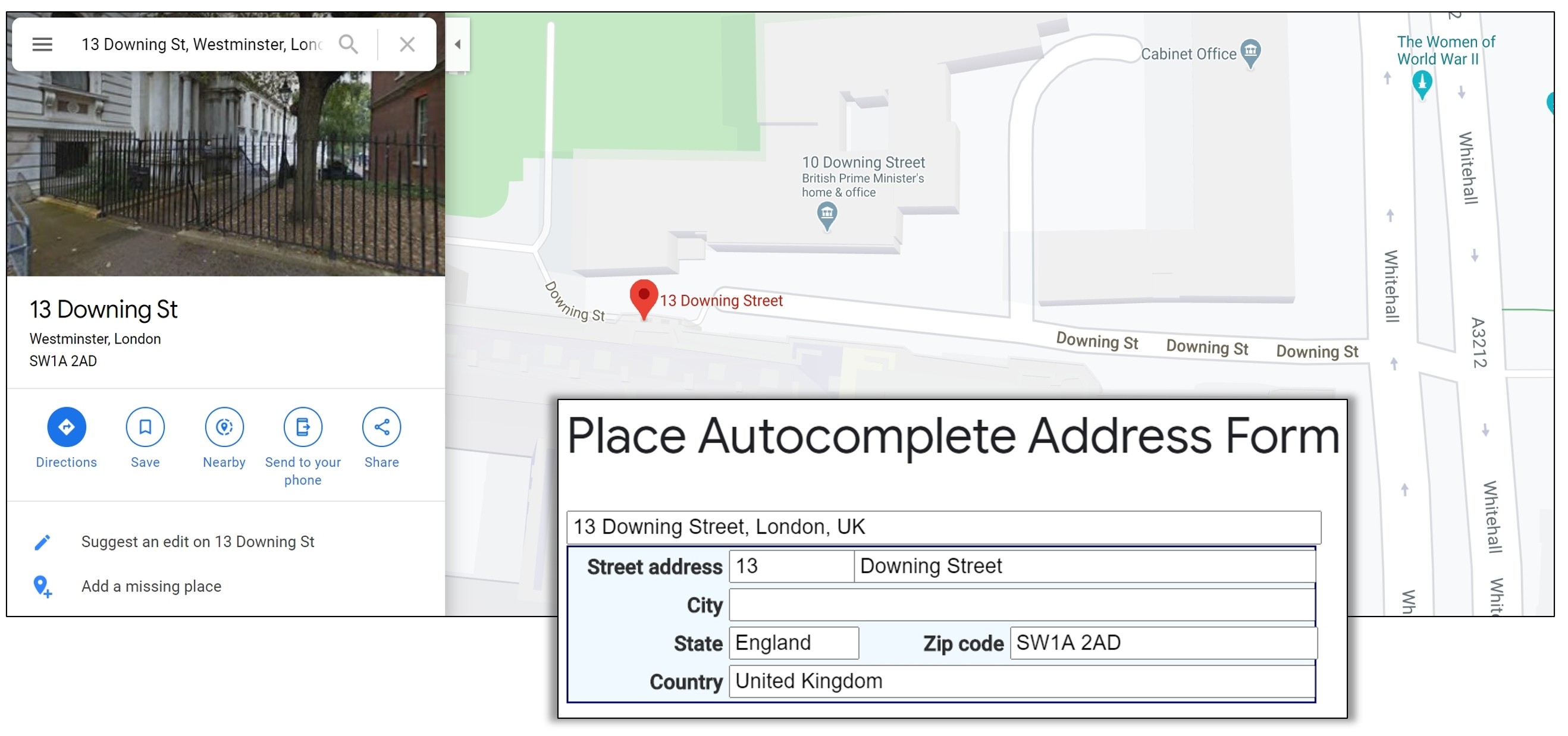We Don't Sell Toasters
07 Jul 2020

Nor do we sell beard-care products. We won’t change your car’s coolant. Or provide personal training services. However, when it comes to address lookup, verification and autocomplete, we’ve got more experience than anyone else and we think we’ve got the fastest, most accurate and most reliable software in the world. So we sell that.
Similarly, Google is an amazing search engine. Fast, accurate and comprehensive – we all use it every day. It also sells incredible advertising services. It makes money by being brilliant at these things and many others.
However, if you are ever tempted to use Google for address lookup, we think there’s a few things that you should be aware of.
Most importantly, the UK addresses it returns are not verified against the Royal Mail Postcode Address File (PAF) or many of the data sources that we regularly use.
This is important because address lookup is a vital part of any online shopping system. It is the means by which customers can enter their addresses easily by either verifying or auto-completing their address entry.
One of the biggest benefits to online retailers is the assurance that they have correct address data for deliveries.
Where does Google get its address data?
The data comes from a wide variety of sources including, user contributions, local transport departments and a number of third-party sources such as, Yellow Pages, US Geological Survey and Mexico’s National Institute of Statistics and Geography.
Google holds this information in a database, but it is difficult find out when and how changes are made to this database. While it appears that each piece of data is given more weight according to the number of sources, the information is not checked against any source that is recognised for its address structure or content integrity (which would be the Royal Mail and Ordnance Survey in the UK).
How often is the data updated?
The database is not updated according to any published or recognised standards. Suppliers and contributors can supply or amend data objects, or ask for their removal.
Google states that their data is continually checked and estimate that there are 25 million updates daily, although there is no real detail available on the validation processing involved.
Normal updates (including cross-referencing establishment details with the Place page) are applied approximately once a month. There are also major search algorithmic changes applied sporadically, which can change the ordering and priorities of Places and Geocoding results.
What are the threats to the integrity of the Google data for addressing?
- The data comes from many sources, including user input, making it potentially unreliable.
- It is not subject to any automated verification processes.
- As the data, according to Google, is constantly changing, there is no useable version stamping.
- It is possible for the same location to have multiple, different PlaceIDs. These PlaceIDs can and do change over time without warning. Therefore, PlaceIDs cannot realistically be retained for future use – they are only ‘good’ for the lookup done at a particular moment in time.
What are the benefits of using Google data?
- The wide range of coverage and different sources means there is data available for many worldwide locations.
- The method of contribution can have agility benefits. For example, it may contain seasonal or ‘pop-up shops’ before they are included in other, static data sources.
A real world example – test it yourself
A simple test is to use Google to verify an impossible address. Search Google for a house number on your street that you know doesn’t exist. Or use this link to an autocomplete example using Google’s API… https://developers.google.com/maps/documentation/javascript/examples/places-autocomplete-addressform. Google will find the non-existent house and even provides a pinpoint location for it. In some cases, it will even return a postcode.
For example, 13 Downing Street, London. There has not been a number 13 Downing Street since 1876 and yet Google returns a postcode and a map reference. It looks like a valid address, but the property does not exist.

Using an address lookup service like Hopewiser’s (https://www.hopewiser.com/free-addresssearch/) and it becomes clear that the address does not exist.

If you put in the name of a road that doesn’t exist, Google will still try to return an address and a map location. It will make a best guess at an address, but again, there’s no verification process.
All this is important when planning to fulfil an online order with address data completed by a user. If they mistype and enter a non-existent address, Google could return a false result.
Plus, if Google can find non-existent addresses, the potential for fraud is huge.
So while it maybe free, the quality of data it returns is not as reliable as the data that comes from commercial sources like Hopewiser.
In short, when it comes to the quality of address data, like most things in life, you get what you pay for. So, don’t be tempted to use Google for address data and don’t buy a Hopewiser toaster.

Please login to comment.
Comments